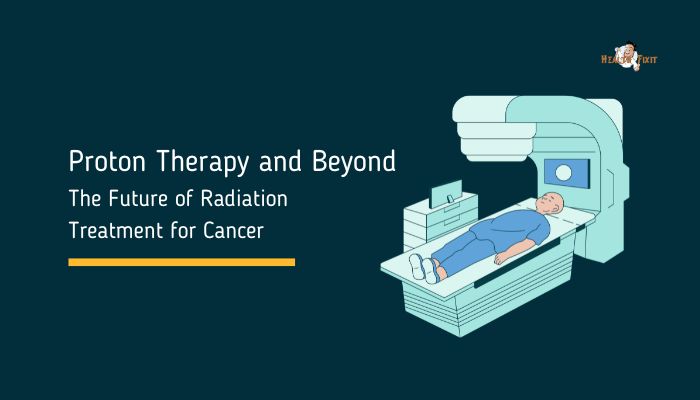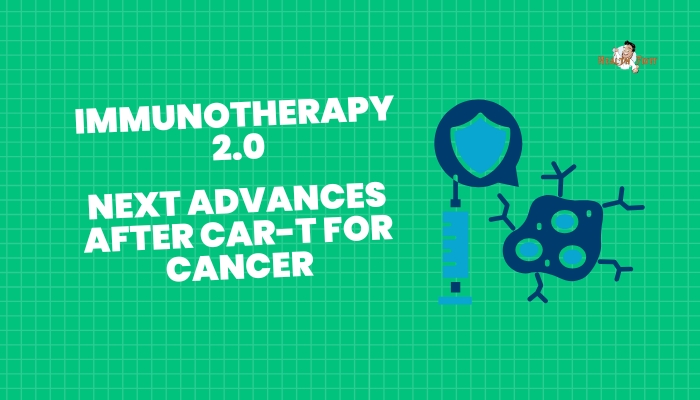Introduction
Radiation therapy stands as a key pillar of cancer treatment, alongside surgery and chemotherapy.
Yet traditional X-ray (photon) radiation can damage healthy tissue as it travels through the body to reach the tumor.
Proton therapy—and its emerging counterparts like carbon-ion therapy—seeks to overcome this limitation by delivering more targeted doses, potentially reducing side effects and improving outcomes.
As these technologies expand, they promise a new era of precision radiation treatment, offering hope to patients with previously hard-to-treat tumors.
This article explores how proton therapy works, the potential benefits of advanced particle treatments, and where research points for the future of radiation oncology.
Why Move Beyond Conventional Photon Radiation?
Collateral Damage and Side Effects
Photon (X-ray) radiation often harms healthy tissue on its path in and out of the tumor. This can cause side effects like fatigue,
skin reactions, or long-term organ damage. While modern techniques—like intensity-modulated radiation therapy (IMRT)—minimize dose to surrounding tissues, they can’t fully avoid it.
Dose Distribution Challenges
X-rays deposit energy gradually along their trajectory. Conversely, heavier particles (like protons or carbon ions) exhibit a Bragg peak, releasing most of their energy at a specific depth. That means minimal exit dose and a sharper focus on the tumor.
Hard-to-Treat Tumors
Certain malignancies—like those near critical structures (brain, spinal cord) or in pediatric patients—benefit from more targeted approaches. Minimizing damage is crucial, especially for children’s developing bodies.
Proton Therapy Basics
The Bragg Peak Advantage
Protons slow down as they penetrate tissue, ultimately depositing a burst of energy right before coming to a stop (the Bragg peak). By tuning the proton beam’s energy, oncologists can direct the peak into the tumor volume, sparing surrounding healthy cells.
Typical Use Cases
- Pediatric Cancers: Minimizing radiation dose to growing tissues is paramount. Proton therapy can help avoid severe long-term effects.
- Head and Neck Tumors: These regions have many sensitive nerves and glands; proton beams reduce collateral damage.
- Re-Irradiation Scenarios: When tumors recur or second tumors appear in previously irradiated areas, proton therapy can limit additional toxicity to tissues already near their dose limit.
Current Spread and Limitations
Proton therapy centers are large, cost-intensive facilities with powerful cyclotrons or synchrotrons. As of now, only a few dozen centers exist globally. However, new compact systems aim to reduce building size and expense, potentially broadening access.
Emerging Modalities: Carbon Ion Therapy and More
Carbon Ion Therapy
Even heavier than protons, carbon ions deliver a strong Bragg peak and enhanced biological effectiveness—meaning they cause more lethal DNA damage to cancer cells. Preliminary data suggest it may outperform protons for certain resistant tumors (e.g., some sarcomas or pancreatic cancers). However, carbon-ion centers are even rarer and more expensive than proton facilities, limiting availability.
FLASH Radiation
A new concept, FLASH therapy, applies ultra-high doses in a fraction of a second. Animal studies show normal tissues better tolerate short bursts of intense radiation,
yet tumors still receive a therapeutic effect. Researchers are exploring whether FLASH (with electrons, protons, or carbon ions) could revolutionize radiation therapy by drastically shortening sessions and reducing side effects.
MRI-Guided Radiation
Though not a different particle type, MRI-guided radiotherapy merges imaging in real-time with delivery.
This approach fine-tunes beams based on daily tumor motion—especially beneficial for moving targets like lung or abdominal tumors. More precise beam shaping can reduce margins and spares healthy tissue.
Clinical Impact and Patient Benefits
Reduced Side Effects
For many patients, advanced radiation means less fatigue, fewer skin issues, and lower risk of secondary cancers. Particle therapies’ precision spares more healthy tissue, promoting improved quality of life during and after treatment.
Potential for Higher Curative Doses
Tumors unresponsive to standard radiation might respond better to proton or carbon-ion beams if dose can be escalated safely. This approach fosters better local control, especially in challenging sites (e.g., ocular melanoma, certain head-and-neck tumors).
Pediatric Advantages
Children are especially vulnerable to radiation toxicity. Proton therapy’s minimal exit dose drastically reduces the risk of growth deformities, secondary cancers, or neurocognitive deficits. This advantage cements proton therapy’s role in many pediatric oncology protocols.
Cost, Accessibility, and Debates
High Price Tag
Building a typical proton center can cost hundreds of millions of dollars. Carbon-ion facilities can be even pricier. This capital-intensive structure raises concerns about equitable access—smaller or developing regions may lack resources to adopt these modalities.
Ongoing Comparative Trials
While proton therapy is established for pediatric and certain adult cancers (like chordomas), data for some other sites remain inconclusive.
Large, randomized trials are in progress to confirm or refine the advantage. The results will shape insurance coverage and clinical guidelines.
Expanding Technology
Emerging compact or single-room proton systems and smaller carbon-ion prototypes could reduce the cost barrier. If these designs prove clinically robust, more hospitals worldwide might adopt advanced particle therapy, bridging the current accessibility gap.
The Path Forward
Personalized Combination Therapy
As radiation becomes more precise, synergy with immunotherapy or targeted drugs intensifies. For instance
, partial tumor irradiation with protons might free up an immune response complementary to checkpoint inhibitors. Combining local control with systemic effect might yield better outcomes.
Global Collaboration
Networking among centers can enhance data sharing, accelerate training, and unify best practices. For novel approaches like carbon ions or FLASH, international research efforts are pivotal to confirm efficacy and define optimal usage.
Next Decade Outlook
Expect incremental expansions of proton centers, new breakthroughs in carbon-ion therapy, and refined evidence that clarifies which patients benefit most. If costs drop, advanced radiation could become a mainstay for more tumor types, delivering robust control with fewer side effects.
Patient and Provider Considerations
- Assess Indications: Not all tumors require proton or carbon-ion therapy. Oncologists weigh the margin of benefit against cost, location, and treatment availability.
- Check Insurance: Coverage for advanced radiation can vary widely by country or plan. Patients might need to petition or travel to specialized centers.
- Stay Informed: For those with complex, radioresistant, or pediatric cancers, consult radiation oncologists familiar with particle therapy and ask about relevant clinical trials.
- Lifestyle and Support: Even with advanced therapies, supportive care—nutrition, physical activity, mental health—remains essential for the best treatment experience and outcome.
Conclusion
Proton therapy and the broader family of advanced radiation techniques—like carbon ions or FLASH—signal a transformative future for cancer treatment.
By precisely sculpting radiation dose to tumor contours and sparing healthy tissues, these modalities promise improved effectiveness and fewer complications, especially for challenging tumors or pediatric patients.
Though cost and access remain major bottlenecks, evolving technologies and global research collaboration are gradually bridging the gap.
Over the next decade, these state-of-the-art approaches may become increasingly standard, fulfilling the aim of delivering powerful, targeted radiation with minimal collateral damage—a crucial step in the relentless pursuit to conquer cancer.
References
- Suit H, DeLaney T, Goldberg S, et al. Proton vs. photon radiation therapy in cancer treatment: a review. Curr Probl Cancer. 2018;42(6):443–454.
- Jermann M, et al. The cost effectiveness of proton radiation therapy. Int J Radiat Oncol Biol Phys. 2018;101(2):508–514.
- Held KD, et al. Research advances emerging from the national cancer institute’s workshop on charged particle therapy. Int J Radiat Oncol Biol Phys. 2019;105(4):674–680.
- Kirk M, et al. Carbon ion radiotherapy for high-grade tumors: systematic evidence. Lancet Oncol. 2021;22(7):e289–e298.
- Favaudon V, et al. Ultrahigh dose rate FLASH irradiation. Radiother Oncol. 2020;153:49–55.
- American Society for Radiation Oncology (ASTRO). Particle therapy position statement. 2021.
- Liu C, Goksel E. MRI-guided radiotherapy: synergy with proton or carbon-ion therapy. J Radiat Res. 2020;61(4):613–622.
- Chang JY, et al. Proton therapy for lung cancer. Semin Radiat Oncol. 2019;29(2):159–167.
- Charged Particle Therapy Working Group. Global status of proton, carbon, and helium ion therapy. Radiother Oncol. 2017;125(1):6–13.
- Hall EJ, Giaccia AJ. Radiobiology for the Radiologist. 8th ed. Wolters Kluwer; 2018.






